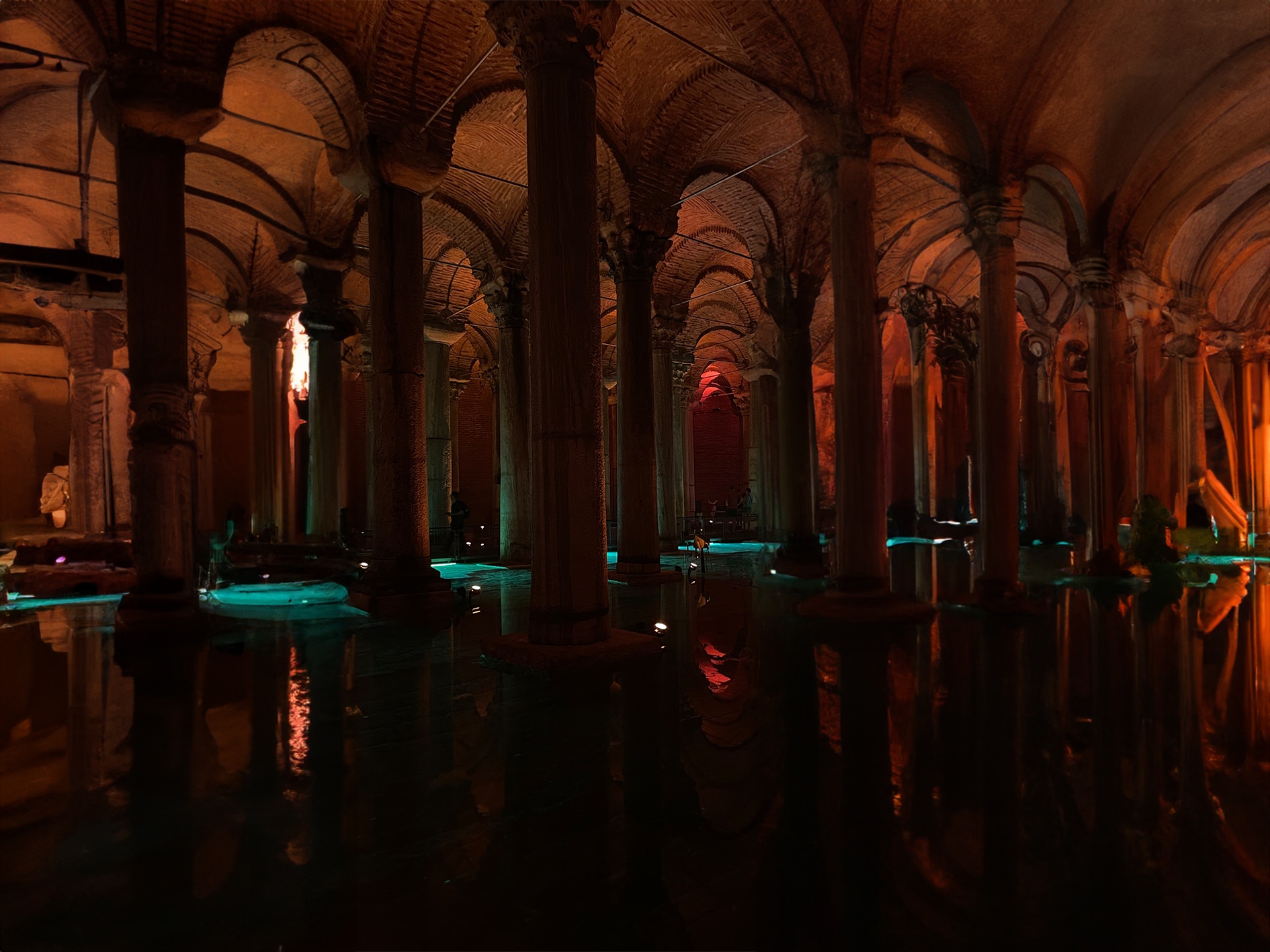History of Basilica Cistern

Brief Overview
- 6th Century: Construction of the Basilica Cistern to supply water to the Byzantine Imperial Palace and neighbourhood
- 16th Century: Functioned as the Ottoman Empire’s water reserve and supplied water to the Topkapi Palace
- 20th Century: Restored by the Ottomans, illuminated with lights, and opened to the public
- 1987: After being restored, the cistern was opened to the public as a museum by the city government. It has since hosted many national and international events.
>> Learn here everything you should know before visiting Basilica Cistern
HISTORY / ARCHITECTURE
History of the Basilica Cistern: Construction
The Basilica Cistern (Yerebatan Sarayı) Museum is a significant cultural asset in Istanbul, showcasing the city's rich history. Built by Eastern Roman Emperor Justinian I (527–565), the colossal underground cistern is the largest covered cistern in the city, with an 80,000-tonne water storage capacity.
History of the Basilica Cistern: Architecture
Covering approximately 10,000 square metres, it has a rectangular shape with a length of 140 metres and a width of 70 metres. The cistern used to distribute water from waterways and rain to the Great Palace and surrounding buildings, meeting the city's water needs for hundreds of years.
The cistern has 336 columns, each measuring 9 metres in height, erected at 4.80-metre intervals, forming 12 rows, each containing 28 columns. The columns are carved from various types of marble and feature different features, such as Corinthian style or plain, unadorned capitals. The cistern's brick walls and brick-paved floor are impermeable by a thick layer of mortar made from "Horasan" lime.
History of the Basilica Cistern: Rediscovering the Forgotten Cistern
The Basilica cistern was kept in good condition for centuries, but it fell into disrepair after the Ottoman conquest of Constantinople in 1453 and was eventually forgotten. It was not until the French naturalist and topography expert Petrus Gyllius rediscovered it between 1544 and 1555, who measured the cistern's dimensions and recorded its dimensions. Gyllius' statements about locals using the cistern and its use of buckets, boats, and lamps for illumination show the locals' awareness of the structure.
History of the Basilica Cistern: Under Ottoman Rule
The Basilica cistern underwent restorations during the Ottoman period, with the first restoration during Sultan Ahmed III and the second during Sultan Abdulhamid II. Between 1955 and 1960, nine columns under risk of collapse were covered with a thick layer of concrete.
History of the Basilica Cistern: Today
In 1985–1987, the Istanbul Metropolitan Municipality carried out a comprehensive restoration and cleaning project, revealing iconic Medusa heads, which are considered one of the most significant examples of Roman sculpture.
The Yerebatan Cistern Museum was reopened to the public in July 2022, hosting temporary exhibitions, contemporary art performances, and cultural events. The museum aims to create a universe for the future of art with its deep memory and continues its journey with the new generation of museology under the auspices of Istanbul Metropolitan Municipality's Culture Inc.
Is Medusa's Tomb Within the Cistern of the Basilica?
This is without a doubt the most fascinating urban myth surrounding the Basilica Cisterns history.
Delegates from Venice visited Fatih Sultan Mehmet in 1456. Fatih is too busy to meet with the envoys, but when the vizier meets with them, he discovers some interesting information: there is a treasure in the Basilica Cistern, but only the sultan will know its location. The topic is brought up to Fatih Sultan Mehmet, and the meeting occurs. During the meeting, the envoy explains that this is not a physical treasure; instead, it's a dead body. In exchange for the body and the sarcophagus containing the body, the Sultan will receive everything he desires. This is rejected by Fatih, and the delegation departs.
A delegation was sent to Abdülhamit II to discuss this many centuries later. Abdülhamit II sends a team to the cistern to look into the matter because he is interested in it. A sarcophagus is discovered in the Basilica Cistern's catacombs. The sarcophagus is placed in the cistern for protection, and it is determined that it will only be uncovered if its lid is not opened. However, a child who reaches the tomb discovers and opens the sarcophagus. Inside the sarcophagus is the mummy of a creature whose head resembles a human and whose body has the curves of a serpent.
The kid describes the incident by saying, "I saw Şahmeran (half serpent, half woman, according to Turkish myth)." The sarcophagus is then removed from the cellars, transported to the courtyard of Fatih Mosque, and displayed briefly for the public.
Even photographs of the corpse were taken and distributed to newspapers at the time. However, no newspapers from that day were discovered. According to the rumour, the Venice delegation concealed what happened because they were members of a sect.
